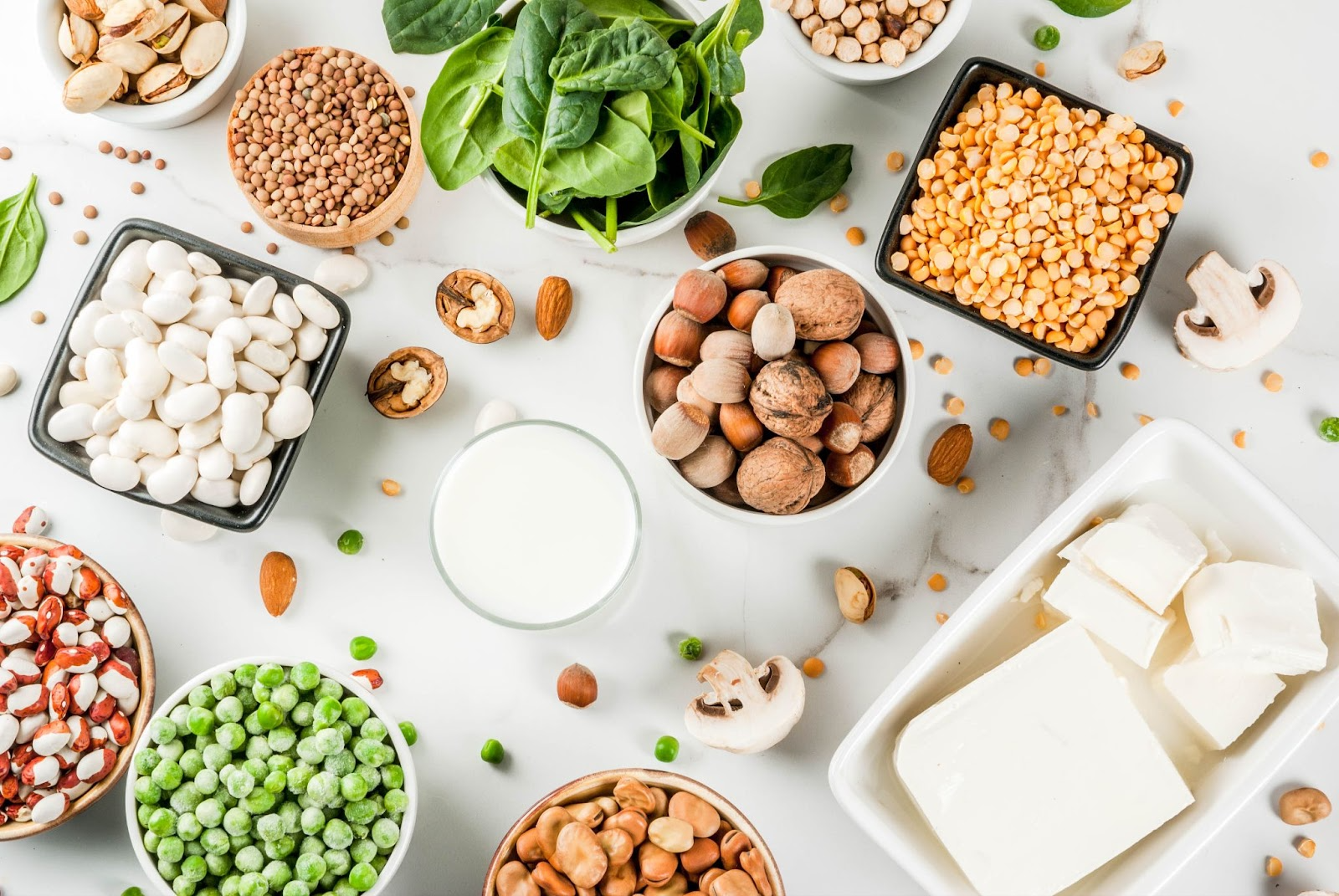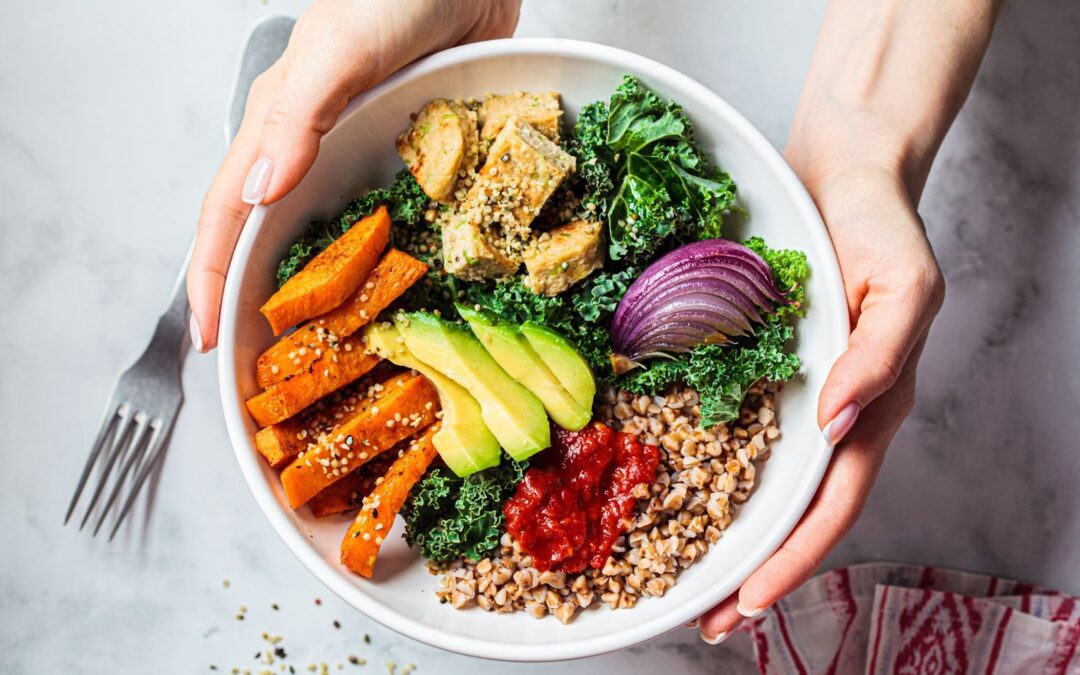In recent years, vegetarian and vegan diets have gained immense popularity, not just for their ethical and environmental benefits but also for their positive impact on health. However, sometimes it can feel like a challenge to keep your meals exciting and satisfying when you’re relying solely on plant-based ingredients. Fear not! With a few simple tweaks, creative ideas, and using a meal tracker app, you can take your vegetarian and vegan meals to the next level. Whether you’re a seasoned plant-based eater or just starting out on your journey, these tips will help you enhance the flavour, variety, and nutritional value of your meals.

Table of Contents
Experiment with Different Protein Sources
One of the biggest concerns for those following a vegetarian or vegan diet is ensuring an adequate intake of protein. While staples like tofu, tempeh, and beans are excellent sources of protein, don’t be afraid to explore less conventional options such as quinoa, lentils, chickpeas, and edamame. These ingredients not only provide protein but also add texture and flavour to your dishes.
Maintaining a high protein intake can be challenging on a plant based diet as well. To ensure you are getting an adequate daily intake, aim to spread your protein sources across your meals with plenty of variety. This also aims to keep you more satisfied after each main meal and helps to retain healthy muscle mass. This can look like having pea protein powder in your breakfast smoothie, a tofu salad for lunch, and lentil bolognese for dinner.
As the majority of plant based foods, both processed and fresh, are naturally lower in protein compared to animal proteins, a nutrition tracker can come in handy to help observe your daily intake and where you can make adjustments.
Load Up on Colourful Vegetables
Eating the rainbow isn’t just visually appealing; it’s also a great way to ensure you’re getting a wide range of nutrients in your diet. Aim to include a variety of colourful vegetables in every meal, such as leafy greens, capsicum, tomato, carrots, broccoli, green beans, beetroot, and sweet potatoes. Not only do they add vibrancy to your plate, but they also offer an array of vitamins, minerals, and antioxidants to support overall health.
Opting for fresh, seasonal produce is a great way to make a plant based diet more affordable as well.
Get Creative with Herbs and Spices
Herbs and spices are the secret weapons of any good cook, and they can truly transform the flavour of a dish. Experiment with different combinations to add depth and complexity to your vegetarian and vegan meals, especially as plant based proteins can be quite bland on their own. Try fresh herbs like basil, coriander, and parsley, along with spices such as cumin, paprika, turmeric, and ginger. Don’t be afraid to mix and match until you find the perfect flavour profile for your dish.
Incorporate Healthy Fats
Healthy fats not only add richness and flavour to your meals but also help you feel more satisfied and satiated. Avocado, nuts, seeds, and olive oil are excellent sources of healthy, unsaturated fats that can be easily incorporated into vegetarian and vegan dishes. Add sliced avocado to salads and sandwiches, sprinkle nuts and seeds over oatmeal or yoghurt, and use olive oil for sautéing and dressing.
Sticking to natural, minimally processed sources of fats is best to provide your body with its maximum nutrient intake. Reducing your intake of heavily processed vegan cheeses, and similar products, and enjoying these in moderation instead can minimise your saturated fat intake.
Embrace Plant-Based Substitutes
With the rise of plant-based eating, there are now more options than ever for vegan substitutes for animal products. Whether you’re craving cheese, milk, meat, or eggs, there’s a plant-based alternative available to suit your needs. Experiment with products like nut milk, vegan cheese, tofu-based meat substitutes, and chickpea-based egg replacers to recreate your favourite dishes in a cruelty-free way.
While these products can provide an alternative source of plant based protein, enjoying these in moderation, alongside a wholefood-rich meal is best, as these products can be heavily processed, providing minimal vitamin and mineral intake.
Keep It Balanced with Whole Grains
Whole grains are an essential component of a balanced vegetarian or vegan diet, providing fibre, vitamins, minerals, and sustained energy. Incorporate a variety of whole grains such as brown rice, quinoa, bulgur, farro, and barley into your meals to add texture and substance. Use them as a base for grain bowls, salads, stir-fries, and soups for a nutritious and satisfying meal.
Keep an eye out for fibre, vitamin and mineral-fortified wholegrains as well to boost your intake and help minimise the risk of micronutrient deficiencies.

Use a Food Tracker App
To ensure you’re meeting your nutritional needs on a vegetarian or vegan diet, consider using a food tracker app. An app like Equalution can help you monitor your intake of protein, fibre, vitamins, and minerals, ensuring you’re getting all the nutrients your body needs to thrive. With features like barcode scanning, meal logging, and nutrient analysis, a food tracker app can be a valuable tool for optimising your diet and health.
Especially as plant based diets naturally contain a higher proportion of fats, and lower protein, taking advantage of a meal tracker app can allow you to make more balanced food choices and improve your nutrition education.
Enhancing your vegetarian and vegan meals doesn’t have to be complicated or time-consuming. By incorporating these simple tips and tricks into your cooking routine, and using a nutrition tracker app, you can elevate the flavour, variety, and nutritional value of your plant-based meals. Whether you’re cooking for yourself, your family, or entertaining guests, these ideas will help you create delicious and satisfying vegetarian and vegan dishes that everyone will love.
Want more tips and gidance just like this? Why not try one of our programs packed with delicious healthy recipes and nutrition advice.

